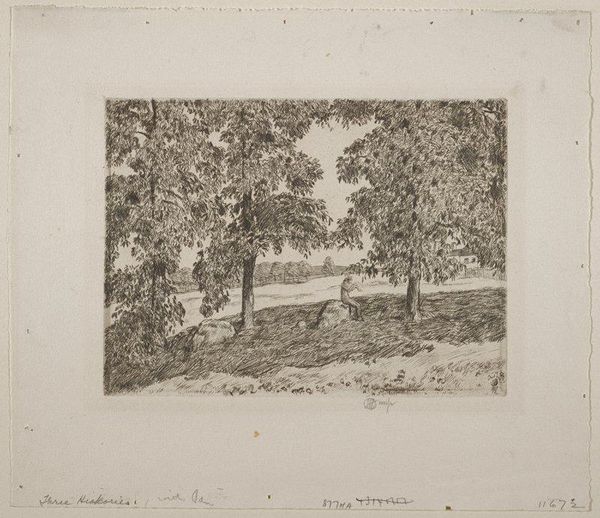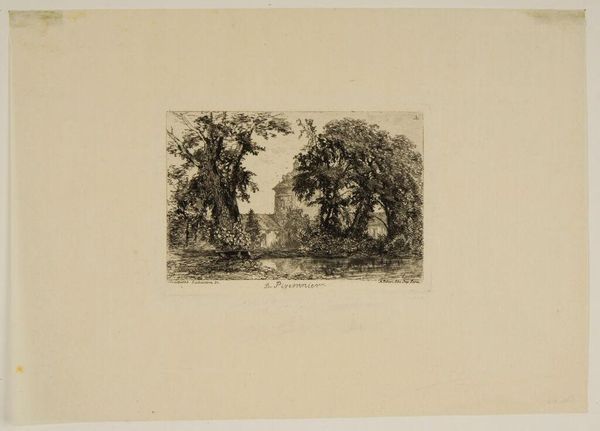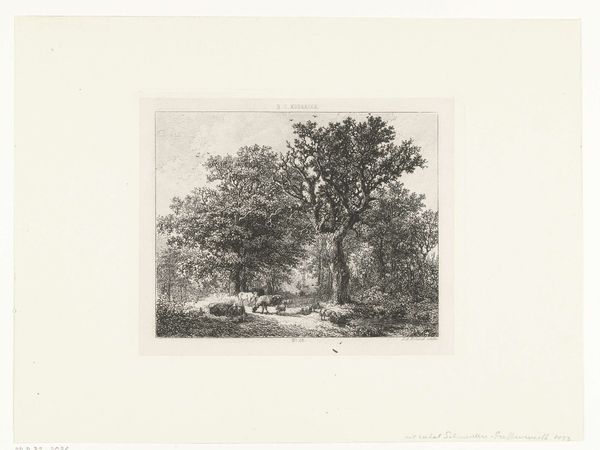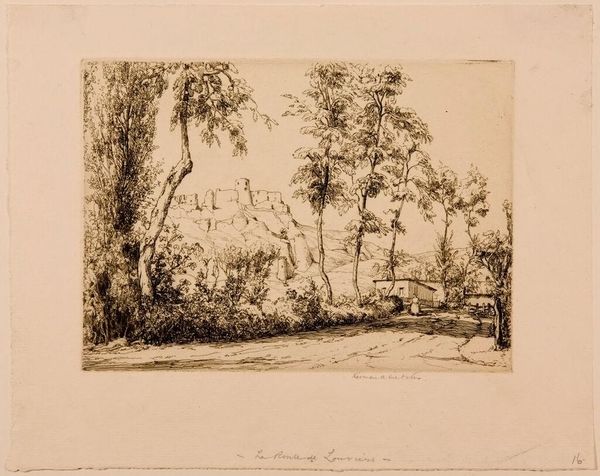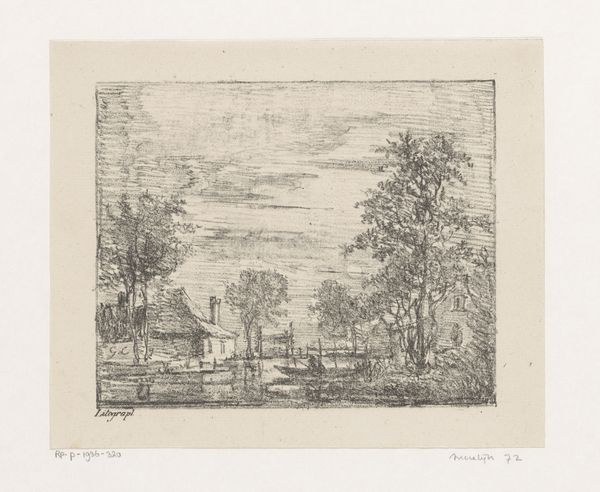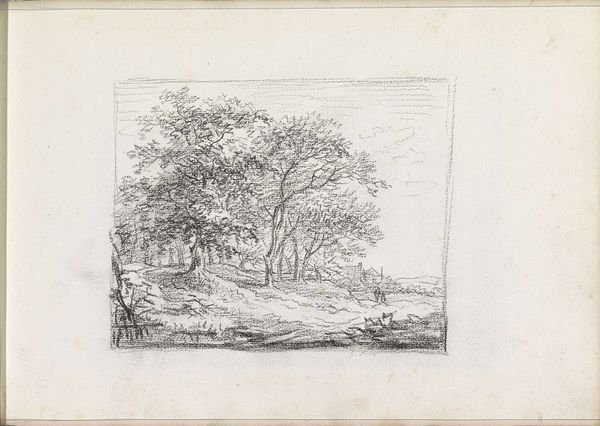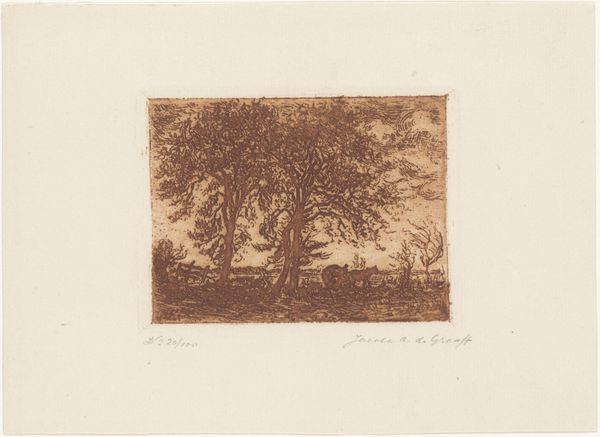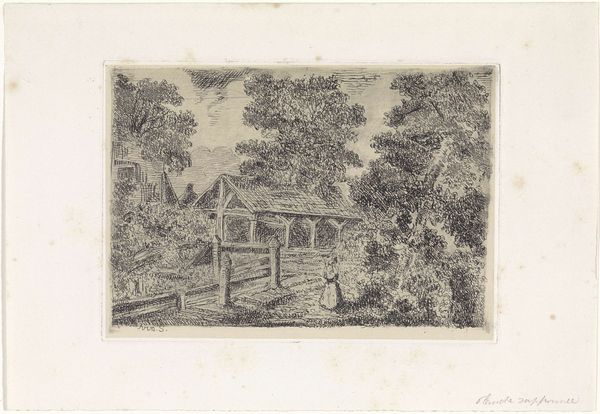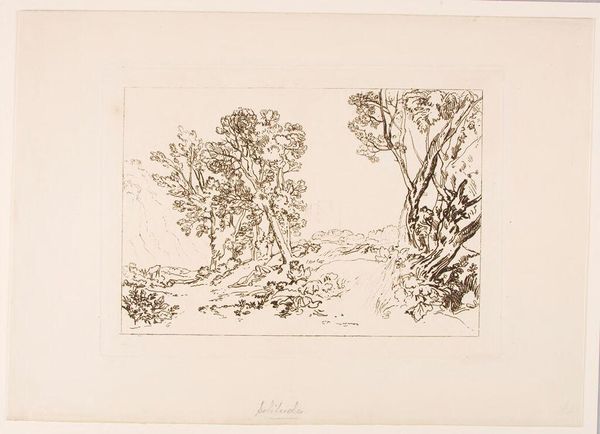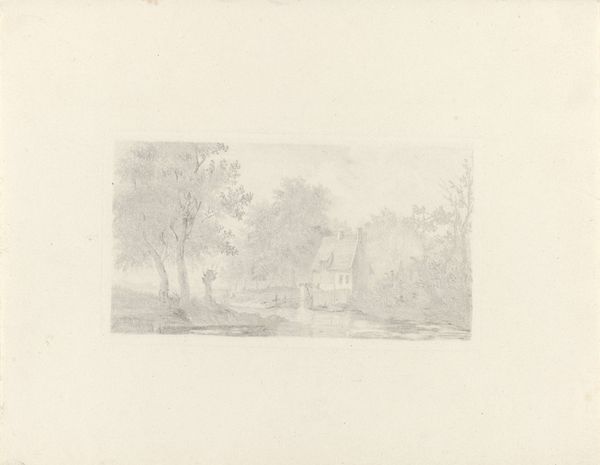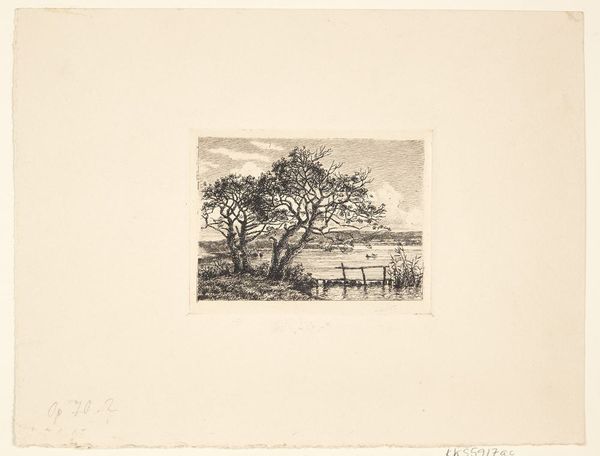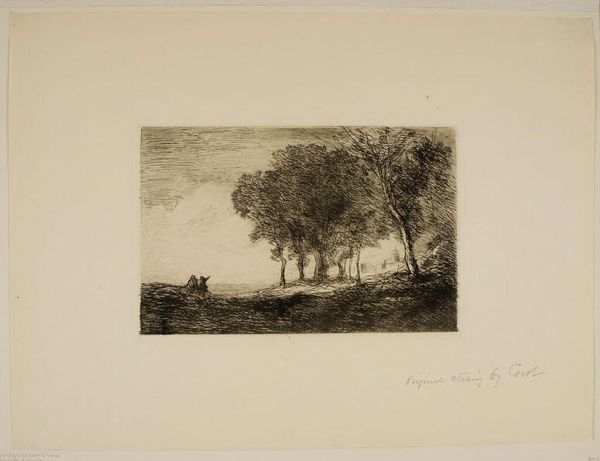
Dimensions: 4 7/16 x 6 3/8 in. (11.27 x 16.19 cm) (plate)9 3/4 x 13 in. (24.77 x 33.02 cm) (sheet)
Copyright: No Copyright - United States
Curator: This etching, titled "Walt Whitman's Birthplace," was created by Childe Hassam in 1927. It is currently part of the collection at the Minneapolis Institute of Art. Editor: It possesses a wistful charm, doesn’t it? The light is distributed evenly, lending the scene a subdued, almost melancholic air. Curator: Hassam masterfully employs etching techniques to create intricate textures. Notice the density of lines in the foliage, compared to the relative sparseness suggesting open sky. This juxtaposition highlights his academic precision. Editor: The subject matter—Walt Whitman's birthplace—inevitably leads me to consider notions of American identity and artistic heritage. How were sites like this cared for, historically? Did their maintenance intersect with larger issues of labor and preservation? Curator: The composition is certainly carefully arranged. The placement of the trees framing the building provides a structured viewing experience, focusing our attention. Also, the wooden fences contribute to this formal composition, directing the gaze toward the central architecture. Editor: Yes, and these fences represent both inclusion and exclusion, controlling accessibility, marking territories of class division and social difference embedded in landscape and the notion of private property. Curator: Such formal aspects speak to Hassam's skillful control over visual elements, evoking contemplative silence, while simultaneously celebrating the home of a major poet. Editor: Considering Whitman's working-class roots, Hassam’s impression raises questions. How did labor build and maintain structures, and who benefitted from Whitman's legacy versus the people and materials whose toils rendered the space? Curator: Through a combined attention to both design and its ability to evoke mood, we’re presented with both a visual memory of a historical place, and more complex readings. Editor: Absolutely. Appreciating art requires acknowledging the myriad hands involved in production and the conditions under which art finds meaning and value, socially.
Comments
No comments
Be the first to comment and join the conversation on the ultimate creative platform.
